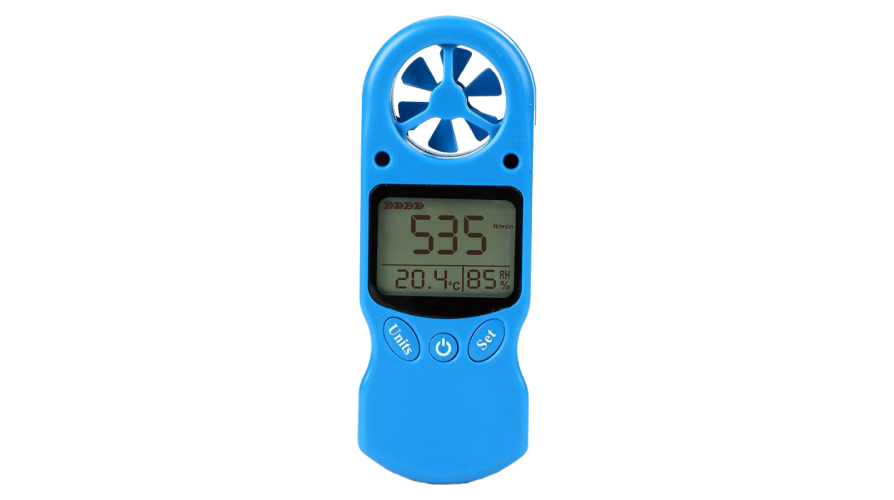Understanding Various Types of Anemometers for Numerous Applications
Understanding Various Types of Anemometers for Numerous Applications
Blog Article
Checking Out the Functions and Advantages of Anemometers for Weather Lovers and Specialists
Anemometers stand as important tools in the realm of climate tracking, accommodating both enthusiasts and seasoned specialists alike. These tools provide a window right into the dynamic globe of wind patterns and speeds, offering vital information for meteorological analysis and projecting. From mug anemometers to sonic anemometers, each type brings its unique set of advantages and applications, dropping light on numerous facets of weather. As we delve right into the functions and advantages of anemometers, a much deeper understanding emerges not just of dominating climate phenomena however likewise of the wider ramifications for fields like wind power production and ecological study.
Value of Anemometers in Weather Monitoring
Anemometers play a vital role in weather tracking by supplying precise measurements of wind speed, helping in projecting and understanding climate patterns. These instruments, varying from conventional cup anemometers to modern ultrasonic anemometers, are essential for meteorologists, scientists, and weather condition fanatics alike. By gauging wind rate, anemometers assist in identifying the intensity of weather condition phenomena such as hurricanes, tornados, and tornadoes. Additionally, they offer useful information for aeronautics, maritime operations, and various markets that are sensitive to wind conditions.

Types of Anemometers and Their Applications
The most common kinds of anemometers include mug anemometers, vane anemometers, hot-wire anemometers, and ultrasonic anemometers. Cup anemometers are composed of three or four cups placed on horizontal arms that turn with the wind, measuring its rate. Vane anemometers, on the various other hand, utilize an easily rotating vane to straighten with the wind instructions, giving both wind speed and direction measurements.
Mug anemometers are robust and appropriate for basic weather condition monitoring, while vane anemometers are favored for directional dimensions. Ultrasonic anemometers are non-intrusive and use high precision, frequently utilized in study and specialized weather tracking applications.
Advantages of Using Anemometers in Forecasting
In weather forecasting, the usage of anemometers offers invaluable benefits for improving the precision of climate forecasting. Anemometers measure wind speed and instructions, offering critical data for anticipating climate patterns. By including wind information into forecasting designs, meteorologists can better understand the activity of weather condition systems, expect modifications in atmospheric conditions, and issue a lot more specific projections.
Additionally, anemometers play an essential role in analyzing potential weather risks. Keeping track of wind rates helps forecasters anticipate serious climate events such as typhoons, tornadoes, and wintertime tornados with greater precision. This early caution system enables authorities to provide prompt alerts and carry out essential precaution, reducing the dangers to life and residential property.
In addition, anemometers assist in enhancing renewable resource production. By examining wind patterns, meteorologists can recognize appropriate locations for wind ranches and forecast power Continued result, adding to the reliable generation of wind power.

Anemometers in Wind Power Manufacturing
Given the crucial role anemometers play in offering precise wind information for weather projecting and risk evaluation, their significance encompasses the realm of wind energy production. Anemometers are vital tools in the field of wind energy, where the dimension of wind rate and direction is important for identifying the usefulness and effectiveness of wind generator installments. By properly determining wind speeds at differing elevations, anemometers help enhance the placement and design of wind generators to optimize power outcome.
In wind ranches, anemometers are purposefully positioned to collect real-time wind data that is utilized to examine the potential energy production of a website. This information contributes in establishing the financial practicality of wind power tasks and in forecasting power generation to guarantee grid stability. In addition, anemometers help in keeping an eye on wind problems to maximize wind turbine efficiency, stop damages from high winds, and make sure the safety of personnel operating in the location of wind generators.
Enhancing Weather Recognizing With Anemometers

Anemometers play a vital function in improving our understanding of microclimates. These localized weather can differ considerably from broader regional forecasts, making it necessary to have accurate information for details locations. anemometer. By tactically putting anemometers in various locations, scientists can gather detailed information on just how wind behaves in different terrains, metropolitan atmospheres, or bodies of water
Moreover, anemometers add to improving weather forecasting designs by supplying real-time information on wind actions. This details is specifically important for anticipating serious weather condition occasions, enhancing agricultural techniques, and sustaining industries like aviation and maritime navigation. Overall, anemometers are vital instruments that allow us to dig much deeper into the intricacies of weather systems, ultimately leading to more accurate forecasts and better-informed choices.
Conclusion
In final thought, anemometers play a critical duty in weather condition tracking and projecting by gauging wind rate and instructions. Anemometers likewise have applications in wind power manufacturing, more highlighting their significance in both weather forecasting and sustainable energy sectors.
From cup anemometers to sonic anemometers, each type brings its one-of-a-kind set of applications and benefits, shedding light on various elements of climatic problems. These tools, varying from traditional cup anemometers to contemporary ultrasonic anemometers, are vital for meteorologists, researchers, and weather fanatics alike. The most right here usual types of anemometers consist of cup anemometers, vane anemometers, hot-wire anemometers, and ultrasonic anemometers. Cup anemometers are durable and suitable for basic weather surveillance, while vane anemometers are preferred for directional measurements. Anemometers are crucial instruments in the area of wind energy, where the measurement of wind rate and direction is essential for establishing the usefulness and efficiency of wind turbine installments.
Report this page